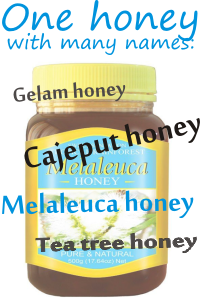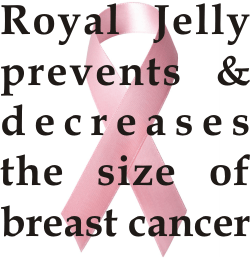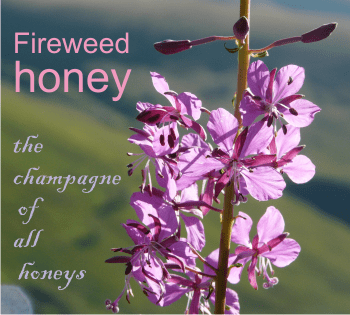What are Gelam Honey’s (aka Melaleuca or Cajeput honey) benefits for our health? How is this that cancer cells commit suicide? What’s in honey that is so bad to them?
Lately, there have been lots of studies on its benefits, but probably the most important activity of honey that was researched was its antiproliferative and apoptosis induction.
Meaning if it heals cancer or not, because this is our most acute concern these days!
Induces apoptosis in cancer cells.
First, what is apoptosis?
Necrosis and Apoptosis are the two ways our cells are dying.
Necrosis happens when the cell is damaged by an external force like:
– poison (yes, our chemotherapy!),
– a bodily injury,
– an infection,
– doesn’t get blood – like in a case of heart attack, stroke or death.
When a cell dies through necrosis, this causes an inflammation, which can trigger further distress or injury within the body.
Apoptosis is suicide. Also known as programmed cell death, a controlled, predictable process. Here is how it’s done: the cell that has been stressed, damaged or triggered by body signals to kill itself, begins to shrink and form blebs. Proteins (called caspases) start to break down the cell’s components. Enzymes break down the nucleus and signals are sent to the macrophages (a special kind of cells, like vacuum cleaners). The cell eventually breaks into smaller parts and the already called macrophages clean up the mess.
When does a cell know it should suicide itself?
1. When cells recognize viruses and gene mutations, they commit suicide to prevent the spreading.
2. When cells are under stress, as may happen when free radicals are on the loose or when a person undergoes radiation.
Signals in the body tell a cell to continue living or not. But this doesn’t always function perfectly, sometimes the wrong cells live and the healthy ones die. These mistakes trigger diseases (or is it the other way around? science doesn’t know.) and disorders in the body. E.G.:
– an increase of apoptosis is met in AIDS, Alzheimer’s and Parkinson’s disease
– a decrease of apoptosis is met in lupus or cancer.
Our scientists are researching on how to control the signals that tell a cell to continue to live or to die. Today’s radiation or anticancer drugs are supposed to trigger apoptosis only in the diseased cells. The bad thing is that this never happens. Healthy cells are killed together with the sick ones.
But guess what! This does happen with honey. Honey is a natural treatment for cancer. After a person takes honey, his sick cells kill themselves. And this is what hundreds of studies are showing: in vivo, in vitro, on animals or in human clinical trials. Products of the hive do have a clear benefit on the human body.
What happens in a cancer cell?
A normal state in our body is maintained by a balance between apoptosis and cell renewal (the birth of new ones). A cancer cell is continuously dividing, causing cellular and organ dysfunction.
Among the population of Asia, liver cancer has a high frequency rate, closely linked to chronic hepatitis B infection. The drugs have failed, and a resistance to them have been found, and side-effects are devastating.
For this reason, most of the studies made on how honey can prevent cancer or how to treat the existent one, are conducted in Asia. The University of Malaysia has published lots of studies, made on different types of honey, especially on Tualang honey, Gelam honey, Manuka honey.
Gelam honey is a local Malaysian honey. What makes this honey a good promising remedy for cancer? Mainly:
– a high content of phenolic compounds which lead to a high level of antibacterial activity
– powerful antioxidant compounds which lead to free radical scavenging.
 From all the superfoods, why was honey chosen for the studies?
From all the superfoods, why was honey chosen for the studies?
First, the food must have a high content of antioxidants. They are known to prevent different diseases, such as cancer, coronary diseases, inflammatory disorders, neurological degeneration, and aging.
Honey is rich in phenolic compounds and other antioxidants like ascorbic acid, amino acids, and proteins. Some phenols and polyphenols found in honey proved to be promising pharmacological agents in the treatment of cancer.
Here are some of them:
caffeic acid (CA), caffeic acid phenyl esters (CAPE), Chrysin (CR), Galangin (GA), Quercetin (QU), Kaempferol (KP), Acacetin (AC), Pinocembrin (PC), Pinobanksin (PB), and Apigenin (AP).
The study “Phenolic acid composition and antioxidant properties of Malaysian honeys.” studied the phenolic acid and flavonoid contents of Malaysian tropical honeys: Tualang, Gelam, and Manuka honey. Among the Malaysian honey samples, Tualang honey had the highest contents of phenolics, flavonoids and DPPH radical-scavenging activities.
In those 3 sample of Malayan honeys, the authors identified:
· 6 phenolic acids: gallic, syringic, benzoic, trans-cinnamic, p-coumaric, and caffeic acids
· 5 flavonoids: catechin, kaempferol, naringenin, luteolin, and apigenin.
The conclusion: Tualang honey is the richest in phenolic acids, and flavonoid compounds, which have strong free radical-scavenging activities.
Studies that show the anti-cancer activity of gelam honey:
• The study “Antiproliferative Activity and Apoptosis Induction by HGelam honey on Liver Cancer Cell Line” by Zakiah Jubri et al., from the National University of Malaysia, and published by the International Journal of Applied Science and Technology, on April 201, was researching the antiproliferative effects of gelam honey on liver cancer, HepG2.
This honey has high polyphenols content that possesses antioxidant and free radical scavenging activity towards preventing cancer and diseases. Gelam honey reduced the proliferation of HepG2 at concentrations of 3% to 70%. Morphological analysis for apoptosis detection using fluorescent microscope under 400X magnification producing typical apoptotic characteristic. It showed that gelam honey has antiproliferative activity towards cancer cell by its ability to induce apoptosis.
Malaysian gelam honey has the ability to reduce
the proliferation rate of liver cancer cells at a low dose
but not affecting the normal liver cells.
• Gelam honey attenuated radiation-induced cell death in human diploid fibroblasts by promoting cell cycle progression and inhibiting apoptosis., by Tengku Ahbrizal Farizal Tengku Ahmad et al. from the Universiti Kebangsaan Malaysia. The aim of this study was to elucidate the role of Gelam honey as a radioprotector in human diploid fibroblast (HDFs) which were exposed to gamma-rays by determining the expression of genes and proteins involved in cell cycle regulation and cell death.
The conclusion: Gelam honey acts a radioprotector against gamma-irradiation by attenuating radiation-induced cell death.
• The antioxidant effect of the Malaysian Gelam honeyon pancreatic hamster cells cultured under hyperglycemicconditions, by Kalaivani Batumalaie et al., published on March 2013.
Type 2 diabetes consists of progressive hyper-glycemia, insulin resistance, and pancreatic ß-cell failure, which could result from glucose toxicity, inflammatory cytokines, and oxidative stress. THe authors of the study investigated the effect of pretreatment with Gelam honey (Melaleuca spp.) and the individual flavonoid components chrysin, luteolin, and quercetin, on the production of reactive oxygen species (ROS), cell viability, lipid perox-idation, and insulin content in hamster pancreatic cells (HIT-T15 cells), cultured under normal and hyperglycemic conditions.
The results: “Data showed that pretreatment with the extract of the Gelam honey and the different favonoid components at the indicated concentration, for 24 h at 37°C, protects ß-cell function from the oxidative damage caused by the ROS, under hyperglycemic state.
The extract from Gelam honey had a protective effect which was significantly higher than the individual flavonoids. This could be due to the additive effect of all the three flavonoids present in the extract, and the phenolic acids such as gallic,ferulic, caffeic, benzoic, and cinnamic acids which areantioxidants.”
• Effects of Gelam and Acacia honey acute administration on some biochemical parameters of Sprague Dawley rats, by Samat S et al., observed the effects of acute administration (14 days) of Gelam honey, a wild harvesting honey and Acacia honey, a beekeeping honey, on male and female Sprague Dawley (SD) rats (a type of rats used in laboratory).
The results suggest that acute consumption of Gelam Honey and Acacia Honey at 2000 mg/kg body weight of male and female Sprague Dawley rats has some discrepancy effects on biochemical parameters but in line with OECD regulation. Gelam honey may have potential in controlling weight gain and triglyceride levels in female rats compared to Acacia honey.
Other studies for further reading:
– Gelam Honey Attenuates Carrageenan-Induced Rat Paw Inflammation via NF-κB Pathway;
– A study on the benefits of gelam honey that showed how gelam honey helps to reverse (or at least slow down) the aging process in rats: Gelam Honey A New Anti-Ageing Supplement?;
– Evaluation of physicochemical and antioxidant properties of sourwood and other Malaysian honeys: a comparison with manuka honey, available for download here: http://journal.chemistrycentral.com/content/pdf/1752-153X-7-138.pdf;
– The Efficacy of Gelam Honey Dressing towards Excisional Wound Healing
All studies’ conclusion: Honey is a functional food with different biological properties such as:
antibacterial (bacteriostatic properties),
anti-inflammatory,
wound and sunburn healing,
antioxidant,
radical scavenging,
antidiabetic,
antimicrobial.
*******************************
References:
http://science.howstuffworks.com/life/cellular-microscopic/apoptosis.htm
http://www.ncbi.nlm.nih.gov/pubmed/19636435
http://www.webmd.com/vitamins-supplements/ingredientmono-457-cajeput%20oil.aspx?activeingredientid=457&activeingredientname=cajeput%20oil
“Melaleuca leucadendra-large2” by Eug – Own work. Licensed under Public Domain via Wikimedia Commons – http://commons.wikimedia.org/wiki/File:Melaleuca_leucadendra-large2.jpg#/media/File:Melaleuca_leucadendra-large2.jpg



